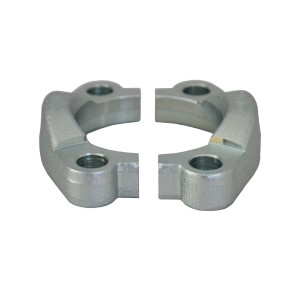Split flange halves
Flange halves with higher nominal pressure classes
Flange halves with designations such as 3000 PSI, 6000 PSI, or 9000 PSI refer to the pressure rating classes. PSI stands for "Pounds per Square Inch," indicating the pressure in pounds exerted on each square inch of surface. This means that the higher the PSI number, the higher the nominal pressure that the flange halves can withstand in a hydraulic system.
Flange halves with higher pressure rating classes are used in industries where it is essential to work with high pressures. This includes industrial environments, offshore technology, petrochemicals, shipbuilding, and other sectors.


Whether it's 3000 PSI or 9000 PSI, it must meet the requirements for safe application.
Flange halves with different pressure rating classes allow for the selection of suitable connecting elements that meet the requirements of each specific application. They are crucial for the safe operation of hydraulic systems subjected to high pressure loads.
How do 3000 PSI differ from 6000 PSI?
- They differ in operating pressures as well as in the dimensions of the mounting holes.
How do 6000 PSI differ from 9000 PSI?
- Similarly, 6000 PSI differs from 9000 PSI in operating pressures and additionally in material thickness.
The choice of materials for the flange halves is crucial, as robust materials such as alloyed steel or stainless steel ensure that the flange halves are protected, for example, from weathering effects.







